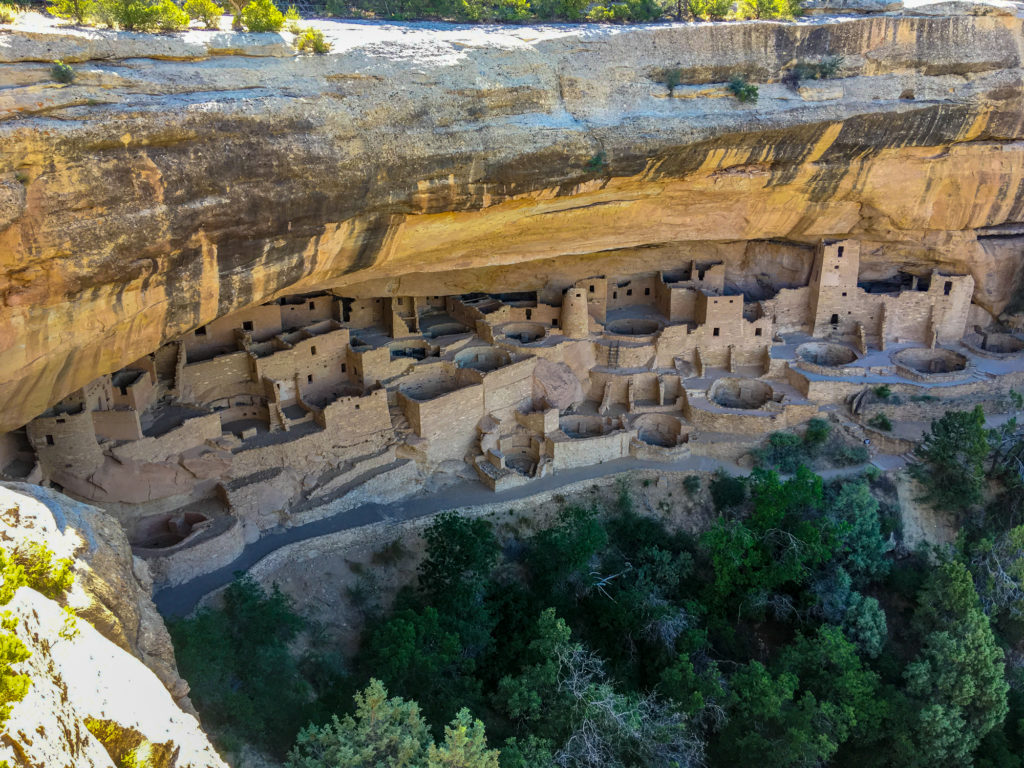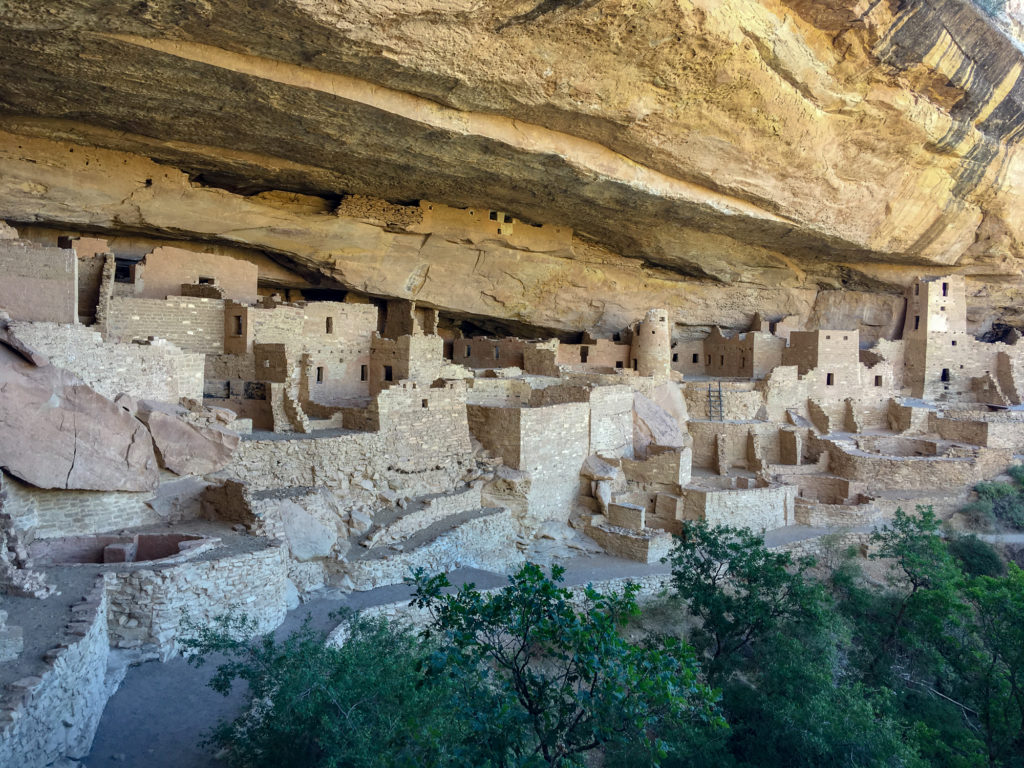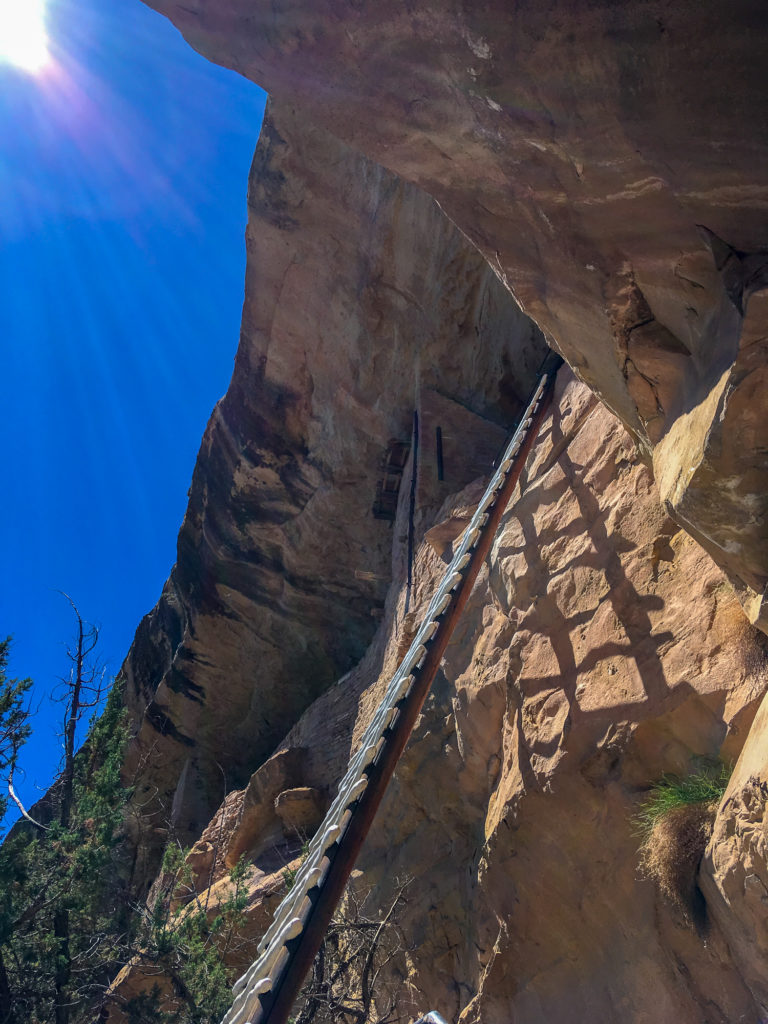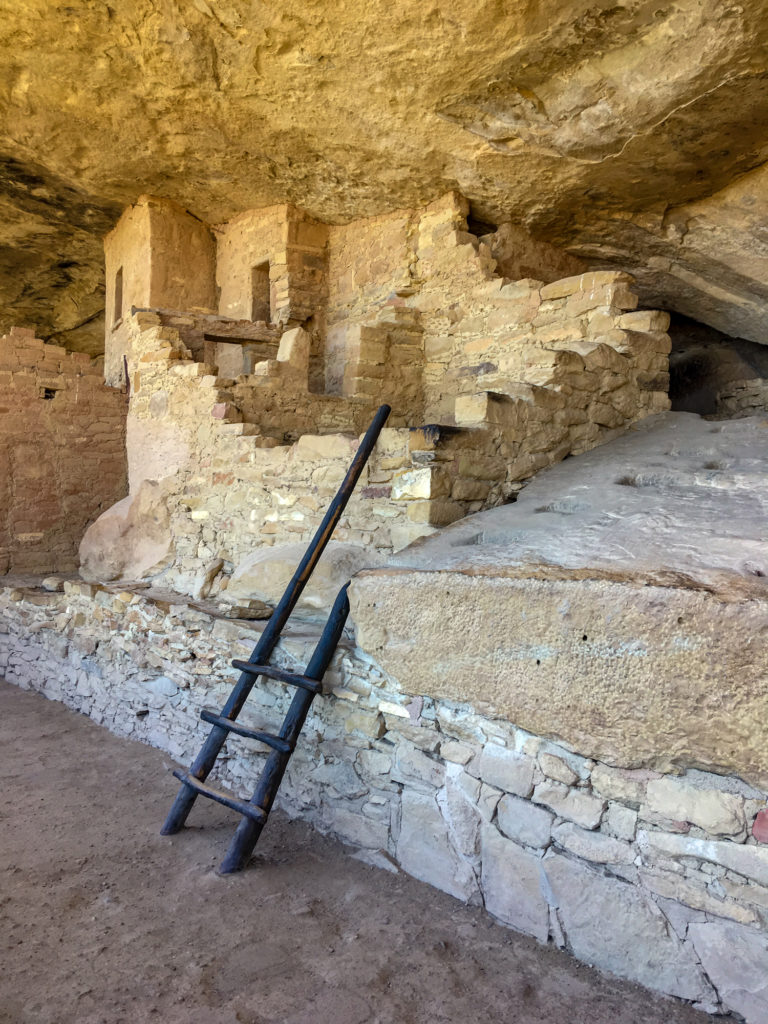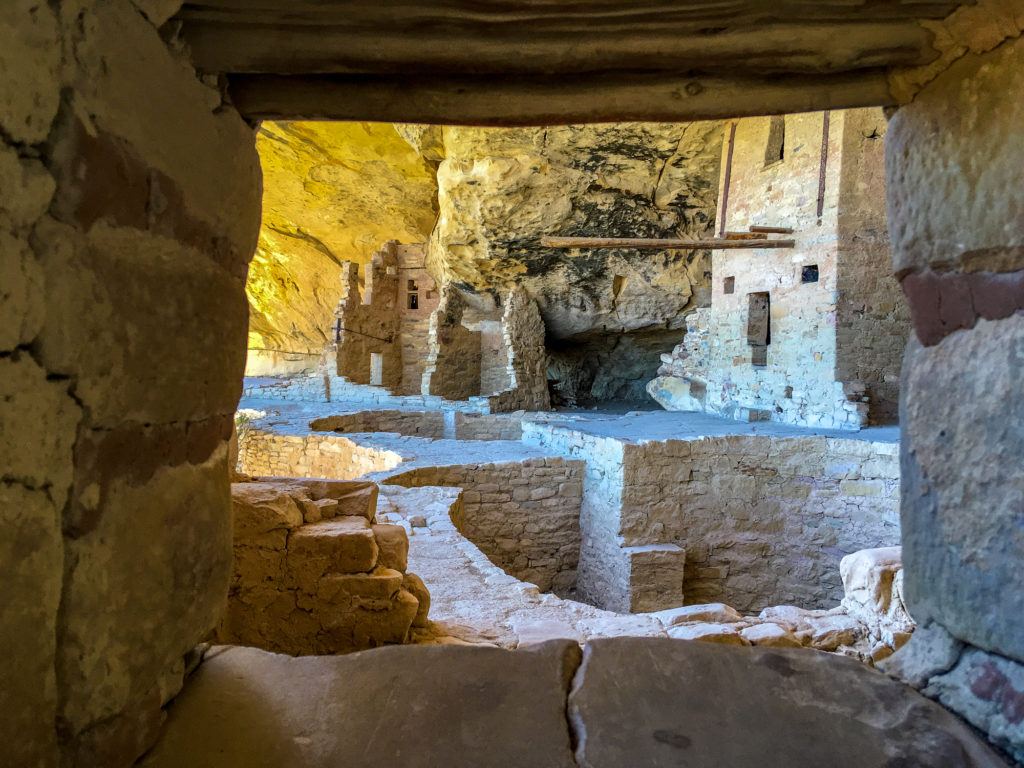Forgotten Civilization?
Today was a major shift from our Utah desert adventures. We spent the day exploring Mesa Verde National Park, which is perhaps the most unique national park we have visited yet. It was a drastic change from the parks and adventures of our last month, since it focused on ancient culture and architecture rather than natural beauty.
A tour through any one of the 3 main cliff dwellings at the park requires being chapparoned by a ranger guide in groups of 30-50 people, scheduled through a paid tour ($5ea / tour / person). Normally, we shy away from guided tours, to allow for exploration at our own pace, but in this case it is very understandable since the dwellings are incredibly delicate, and undoubtedly would not survive uninhibited human curiosity. In fact, we suspect it is only a matter of time until they restrict tours to even smaller groups, and/or restrict tours entirely. One of the dwellings, “Spruce Tree”, has already been indefinitely shut down due to cracks starting to propagate in the main rock canopy ceiling.
We were intrigued by the mysteries of the site. Even after more than 100 years of study, there is no definitive reason why the Pueblo people suddenly built impressive structures in the cliffside caves, only to completely vacate the impressive sites less than 100 years later.
The park and its staff do a nice job of highlighting some of these questions, which include:
- Why did the Pueblo people move to the dwellings in the first place? (They had previously inhabited the caves in a more primitive fashion around 700AD, but then moved back to the Mesa top shortly after. They returned again around 1200AD, which is when they built the impressive structures).
- Why did the Pueblo people leave their dwellings less than 100 years after building them? (there is no sign of violence, the only known difficulty was that they did move after a 20 year drought).
- Where the dwellings built for religious purposes, communal gathering, or homes?
